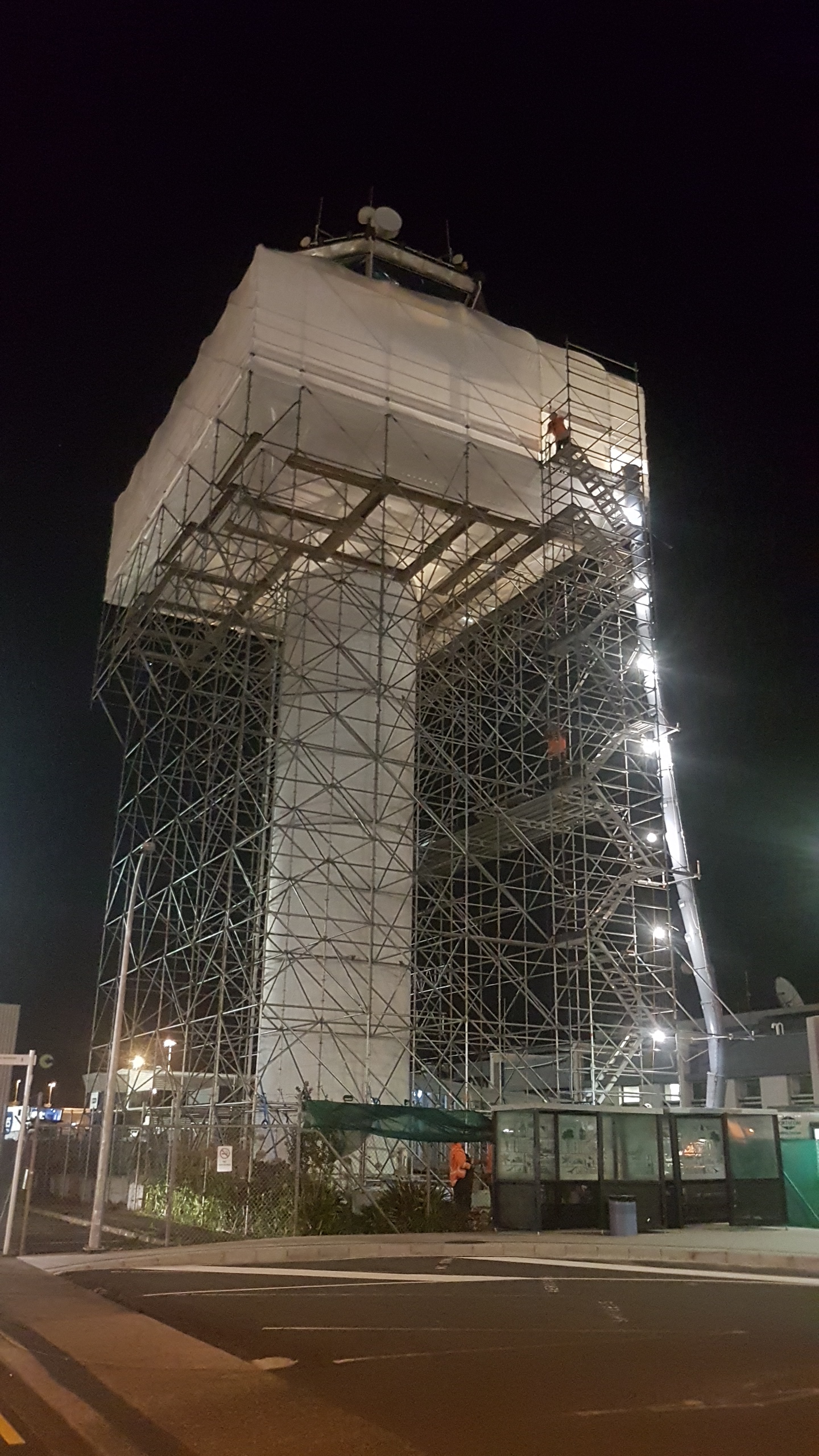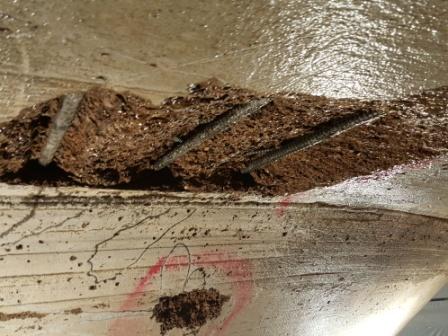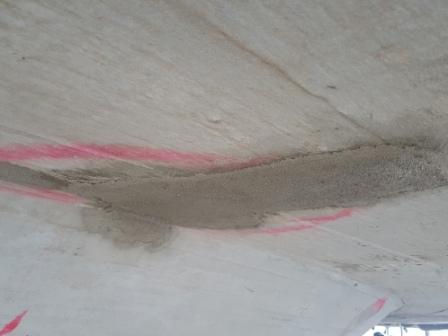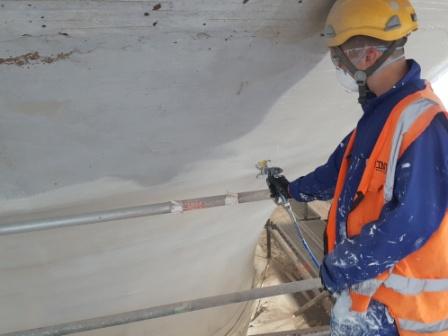The Auckland International Airport Control Tower was constructed in 1963. The structure stands 29M high and consists of two elevated levels supported by a cylindrical cast-in-situ concrete main shaft that is 4.4M in diameter with a 205mm wall thickness.
Opus completed a detailed assessment in 2016 of the Control Tower due to occurrences of concrete spalling which is common in a structure of this type and age and the potential impact on the serviceability of the structure. This assessment was commissioned in order to better define the nature and extent of the present concrete spalling and the risk of further deterioration. Knowledge gained allowed for the successul completion of remedial works and any additional pre-emptive maintenance necessary to extend the life of the asset.
Inspections revealed large areas of the soffit affected by concrete spalling induced by underlying reinforcement corrosion.
Infratel was selected as the prime contractor for Airways to complete the remedial repair works. Health and Safety was the main concern for this project. The Control Tower is adjacent to the busy Domestic Airport Terminal. A major study was completed to understand the safest way to complete the works.
It was agreed to fully scaffold the Control Tower whilst leaving the operations level open for the management of aircraft movements across the Airport runway system.
The work area was then encapsulated to collect any concrete spall that may dislodge from the Tower during the remediation works protecting everyone from loose material falling.
Due to the volume of excavation required, it was decided to use hydro demolition to expose the corroded reinforcement steel. The noise generated by hydro demolition required this work to be undertaken late at night after the Domestic Terminals had closed and through the quieter period of aircraft movements in the early hours of the morning. Lighting was utilised inside the encapsulated workspace to illuminate the working environment.
Once the reinforcing steel was exposed, it was then cleaned and treated. The reinforcing steel was then resealed with high quality mortar.
During the complete rectification process, Opus engineers maintained regular quality inspections to ensure the highest quality standards were being adhered to.
The final scope on the project was to paint the underside of the Control Tower with a high build acrylic paint.
The work was completed with the highest level of health and safety with minimum disruption to the running of the Control Tower.
The Project was completed on time and within budget.
< Back to





